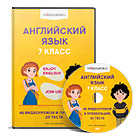Topic of the lesson: Water pollution – now and in the future.
Class: 11
Aim: to teach students to be more tolerant to the source of our life
Objectives: at the end of the lesson the students will be able to: use elements of critical thinking, work in groups, and find out the solution to the problem on the topic.
Resources: smart board, lists with tasks, schemes, lists with self-assessments, stickers
Assessment: self-assessment
| № | Stages of the lesson | Time | Course of events | Using modules
|
| 1 | Prompting | 4 min |
On the desks each of the students has lists of self-assessment. They’ll fill in them after work. | New approaches to teaching and learning
|
| 2 | Presentation | 10 min | Activity 1. To find out the aim of the lesson the teacher suggests students to watch a short cartoon. The main topics of discussion are: - Water as the source of life - Can we live without water? - Water pollution - What may happen in the future if we don’t take care of water?
| Learning to think critically
|
| 3 | Use | 25 min | Activity 2. Speaking. Work in groups.
To help students to answer this question prepare for each group lists of the most common uses of water and the typical number of gallons used for each use.(Appendix 1). Students should study them and identify the following: 1st group – how much water does a person use a day? 2nd group – for what purpose does a person use the most amount of water? 3rd group – how can a person economize using water? Students represent their answers. Activity 3. Speaking, reading. - You know that 71% of Earth is covered in water! 97.2% is salt water, 2.8% is fresh and a lot of this is trapped in glaciers—so what about what’s left? - Can we drink all of that? Why? - Can you name some causes of water pollution? In order to study this problem more detailed the students will read the texts (each group will have its own text – Appendix 2). And after reading, use special for each group scheme to find out the problems, causes and the solutions. The schemes should be known for students, for example, fish bone, tree of prediction, insert and so on (PPT presentation with some examples). Then each group represents their projects for 2 minutes. Other teams listen to each other attentively, because they will assess the projects they like most of all. (students will put stickers on lists with projects, give their comments) Activity 4. Making a conclusion. During the lesson students tried to find out what problems were connected with water, causes of these problems and possible solution. And the teacher suggests to complete the following table (Appendix 3) Before checking the tables the students can watch a short film and then using their own work and ideas from the video try to answer the questions. - What conclusion can we make? | Learning to think critically
New Approaches to Learning: The importance of dialogue in classrooms
Assessment for and of learning
Learning to think critically
|
| 4 | Reflection/student’s feedback | 6 min | The teacher asks students to choose the colors (as at the beginning of the lesson) once again and try to compare their mood (colors) before and now. Has it changed and how? The meaning of the colors students can see on the board (flipchart). Using lists of self-assessment students should assess their work during the lesson. | Assessment for and of learning
|
Appendix 1.
Group 1.
How much water does a person use a day?
Washing face or hands: 1 gallon
Taking a shower (standard shower head): 50 gallons
Taking a shower (low-flow shower head): 25 gallons
Taking a bath: 40 gallons
Brushing teeth (water running): 2 gallons
Brushing teeth (water turned off): gallon
Flushing the toilet (standard-flow toilet): 5 gallons
Flushing the toilet (low-flow toilet): 1-1/2 gallons
Getting a drink: gallon
Washing dishes by hand: 10 gallons
Running a dishwasher: 15 gallons
Doing a load of laundry: 30 gallons
Watering lawn: 300 gallons
Washing car: 50 gallons
1 gallon = 3,8l
Group 2.
For what purpose does a person use the most amount of water?
Washing face or hands: 1 gallon
Taking a shower (standard shower head): 50 gallons
Taking a shower (low-flow shower head): 25 gallons
Taking a bath: 40 gallons
Brushing teeth (water running): 2 gallons
Brushing teeth (water turned off): gallon
Flushing the toilet (standard-flow toilet): 5 gallons
Flushing the toilet (low-flow toilet): 1-1/2 gallons
Getting a drink: gallon
Washing dishes by hand: 10 gallons
Running a dishwasher: 15 gallons
Doing a load of laundry: 30 gallons
Watering lawn: 300 gallons
Washing car: 50 gallons
1 gallon = 3,8l
Group 3.
How can a person economize using water?
Washing face or hands: 1 gallon
Taking a shower (standard shower head): 50 gallons
Taking a shower (low-flow shower head): 25 gallons
Taking a bath: 40 gallons
Brushing teeth (water running): 2 gallons
Brushing teeth (water turned off): gallon
Flushing the toilet (standard-flow toilet): 5 gallons
Flushing the toilet (low-flow toilet): 1-1/2 gallons
Getting a drink: gallon
Washing dishes by hand: 10 gallons
Running a dishwasher: 15 gallons
Doing a load of laundry: 30 gallons
Watering lawn: 300 gallons
Washing car: 50 gallons
1 gallon = 3,8l
Appendix 2.
Group 1.
Water Pollution:
Through natural processes such as erosion and decay, all water contains dissolved or suspended substances. Some natural substances found in water include gases such as air, salts, organic material from plants and animals, microorganisms such as bacteria, and solids such as sand and clay.
Water quality is a measure of the types and amounts of these substances in the water. Water quality is also affected by people. In addition to the natural “contaminants” found in water, many pollutants are being added to our water supplies by human activities. Major sources of water pollution are sewage, industrial wastes, and the runoff of agricultural fertilizers and pesticides.
Other sources of water pollution include oil spills, seepage from landfills, septic tanks, mines, and underground fuel storage tanks. Water pollution can also be caused by storm-water runoff from streets, parking lots, and buildings and even the dumping of household chemicals down the drain.
Water pollution lowers water quality and presents a potential health problem. In addition, water pollution destroys the natural beauty and health of lakes, rivers, and oceans.
Decay – гниение, распад, разложение
Dissolved - растворимый
Sewage – сточные воды
Fertilizers - удобрения
Spill - поток
Seepage - протекание
Group 2.
Water Purification:
Earth is referred to as the water planet because two-thirds of the earth’s surface is covered in water. However, most of the water on earth is seawater and is unfit for drinking, irrigation, and industrial uses because it contains large amounts of dissolved salts.
Only about 3 percent of the earth’s water is fresh water and only a small portion of that water can be used for drinking and other human needs. Nearly all the water to be used for drinking and other human requirements must be treated to make it safe.
Treatment plants purify water by removing suspended
particles, bacteria and other harmful substances.
Two activities are presented to demonstrate water purification. These activities are Water Treatment Simulation and Removing Organic Chemicals from Water.
Dissolved (or suspended) - растворимый
Group 3.
Oil Spill Cleanup:
Oil, or petroleum, is an extremely valuable natural resource because it is a major source of energy. Petroleum is used mostly as fuel for industry, heating and transportation. It is also an important source of raw material for the manufacturing of plastics, synthetic fibers, insecticides, detergents, paints and some medicines.
Oil spills can be harmful to the environment. Oil spilled on the ground can contaminate groundwater, streams, rivers, and lakes that may be used as sources of drinking water.
Oil spills on water can be harmful to aquatic plants, fish and other animals. Some of the largest oil spills have occurred in the oceans, seas, and most recently in the Gulf of Mexico.
Several techniques can be used to clean up oil spills on water such as surrounding the spill with a floating barrier and suing pumps or skimmers to remove the oil or spreading dispersants over the oil which cause the oil to break up into very tiny drops that mix with the water.
Detergents – моющие средства
Spills - потоки
Contaminate - загрязнять
Floating barrier – плавучие препятствие
Suing pumps - насосы
Appendix 3
| What is the problem? | What may happen in the future? | How can we solve the problem? |
|
|
|
|
List of self-assessment
Name __________________________
| № | Working during the lesson I … | Grade | |||
| Brainstorming | Speaking exercises | Work in group | Total | ||
| 1 |
suggested new ideas |
|
|
|
|
| 2 |
took the lead in discussion and suggested ideas |
|
|
|
|
| 3 |
analyzed, made conclusions
|
|
|
|
|
3 – “excellent”
2 – “good”
1 – “I can work better”

 Получите свидетельство
Получите свидетельство Вход
Вход












 Конспект урока "Water pollution - now and in the future" (24.35 KB)
Конспект урока "Water pollution - now and in the future" (24.35 KB)
 0
0 1598
1598 143
143 Нравится
0
Нравится
0


